Wistron NeWeb DRMC81 802.11 b/g mini-PCI WiFi adapter User Manual
Wistron NeWeb Corporation 802.11 b/g mini-PCI WiFi adapter
User Manual
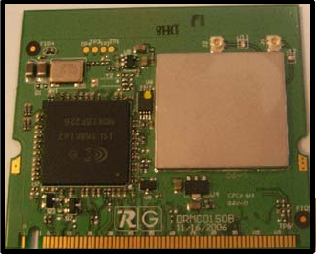
802.11b/g mini-PCI WLAN Module
User’s Manual
Jan. 2007

2
Copyright Statement
No part of this publication may be reproduced, stored in a retrieval system, or transmitted in any
form or by any means, whether electronic, mechanical, photocopying, recording or otherwise
without the prior writing of the publisher.
Windows™ 98SE/2000/ME/XP are trademarks of Microsoft® Corp.
Pentium is trademark of Intel.
All copyright reserved.

3
FCC Interference Statement
This equipment has been tested and found to comply with the limits for a Class B digital device,
pursuant to Part 15 of the FCC Rules. These limits are designed to provide reasonable
protection against harmful interference in a residential installation. This equipment generates,
uses and can radiate radio frequency energy and, if not installed and used in accordance with
the instructions, may cause harmful interference to radio communications. However, there is no
guarantee that interference will not occur in a particular installation. If this equipment does cause
harmful interference to radio or television reception, which can be determined by turning the
equipment off and on, the user is encouraged to try to correct the interference by one of the
following measures:
- Reorient or relocate the receiving antenna.
- Increase the separation between the equipment and receiver.
- Connect the equipment into an outlet on a circuit different from that to which the receiver is
connected.
- Consult the dealer or an experienced radio/TV technician for help.
FCC Caution: To assure continued compliance, (example - use only shielded interface cables
when connecting to computer or peripheral devices) any changes or modifications not expressly
approved by the party responsible for compliance could void the user's authority to operate this
equipment.

4
This device complies with Part 15 of the FCC Rules. Operation is subject to the following two
conditions:
This device may not cause harmful interference, and
This device must accept any interference received, including interference that may cause
undesired operation.
Important Note
This transmitter must not be co-located or operating in conjunction with any other antenna or
transmitter.
IMPORTANT NOTE:
This module is intended for OEM integrator. The OEM integrator is still responsible for the FCC
compliance requirement of the end prouduct which integrates this module.
20cm minimum distance has to be able to be maintained between the antenna and
the users for the host this module is integrated into. Under such configuration, the
FCC radiation exposure limits set forth for an population/uncontrolled environment
can be satisfied.
Any changes or modifications not expressly approved by the manufacturer
could void the user's authority to operate this equipment.
5
USERS MANUAL OF THE END PRODUCT:
In the users manual of the end product, the end user has to be informed to keep
at least 20cm separation with the antenna while this end product is installed and
operated. The end user has to be informed that the FCC radio-frequency
exposure guidelines for an uncontrolled environment can be satisfied. The end
user has to also be informed that any changes or modifications not expressly
approved by the manufacturer could void the user's authority to operate this
equipment. If the size of the end product is smaller than 8x10cm, then additional
FCC part 15.19 statement is required to be available in the users manual: This
device complies with Part 15 of FCC rules. Operation
is subject to the following two conditions: (1) this device may not cause harmful
interference and (2) this device must accept any interference received, including
interference that may cause undesired operation.
LABEL OF THE END PRODUCT:
The final end product must be labeled in a visible area with the following
" Contains TX FCC ID: NKRDRMC81". If the size of the end product is larger than
8x10cm, then the following FCC part 15.19 statement has to also
be available on the label: This device complies with Part 15 of FCC rules.
Operation is subject to the following two conditions: (1) this device may not cause harmful
interference and (2) this device must accept any interference received, including
interference that may cause undesired operation.
6
Chapter 1 Introduction
Thank you for purchasing this 802.11b/g mini-PCI WLAN Module that provides the easiest way to
wireless networking. This User’s Manual contains detailed instructions in the operation of this
product. Please keep this manual for future reference.
Features
RoHS compliance
Operation temperature -25~70oC
High speed for wireless LAN connection: IEEE802.11b 11Mbps data rate by incorporating
Direct Sequence Spread Spectrum (DSSS); IEEE802.11g 54Mbps date rate with OFDM
and 11Mbps with DSSS.
Data Rates: 1, 2, 5.5, 6, 9, 11, 12, 18, 24,36, 48, & 54Mbps.
Modulation OFDM with BPSK, QPSK,16QAM, 64QAM.
DBPSK, DQPSK, CCK.
Mini PCI type IIIA form factor.
Site survey function.
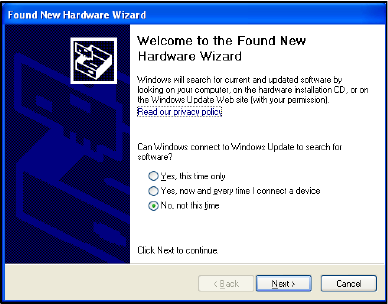
7
Chapter 2 Installation
Follow the steps below to complete the installation:
1. Insert the Installation Software CD into the CD-Rom Drive.
2. Click “Next”.
3. Select “Install from a list or specific location (Advanced)”.
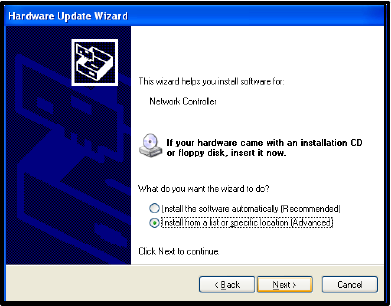
8
4. Click “Next” to continue or click “Browse” to choose a destination folder.
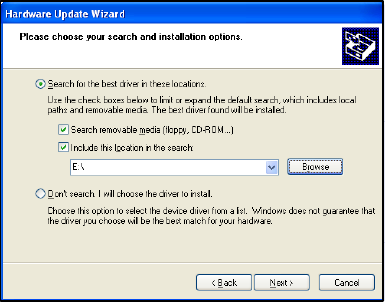
9
5. “Select the folder that contains drivers for your hardware” and click “OK”.
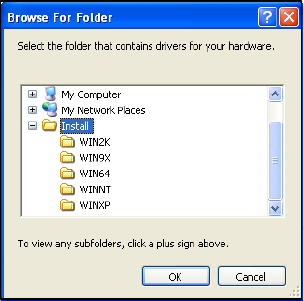
10
6. A pop-up message displayed on the screen click “Continue Anyway”.
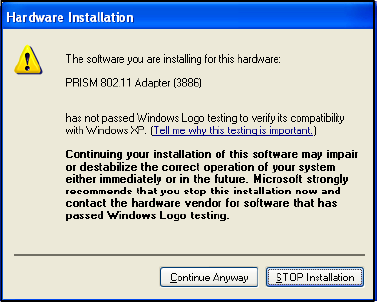
11
7. The hardware installation is completed.
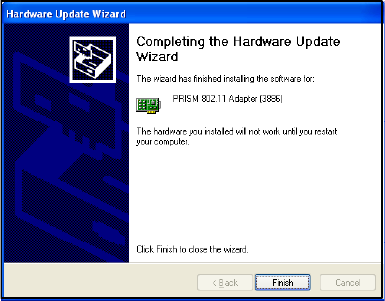
12
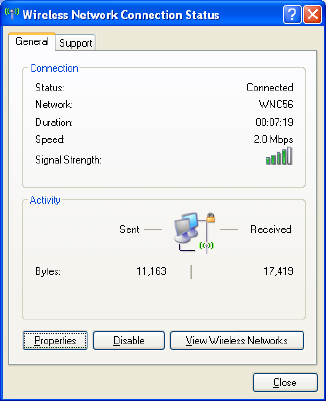
13
Chapter 3 Connecting to a Network
1. Double click the shortcut icon of 802.11b/g mini-PCI WLAN Module on the desktop, and the
Wireless Network Connection Status’ window appears.
2. Select “View Wireless Networks” and check the available networks.
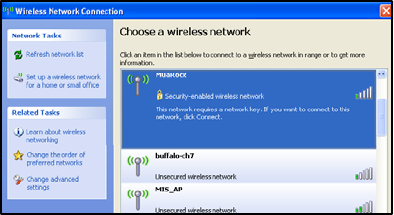
14
3. From the list of “Available Networks”, choose one network by double clicking the Network
Name.
4. You can either select “Unsecured wireless network” or “Security-enabled wireless network”.
You need the appropriate username and password to use a “Security-enabled wireless
network”.

15
Chapter 4 Specification
Item Details
Frequency Range 802.11b/g
US/Canada/ETSI/Japan: 2400~2483.5 MHz
Japan: 2471~2497 MHz
Modulation Technique 802.11b
DSSS (DBPSK, DQPSK, CCK)
OFDM (BPSK, QPSK, QAM, 64QAM)
802.11g
DSSS (DBPSK, DQPSK, CCK)
Channels Support 802.11b/g
US/Canada: 11 (1~11)
Japan 14 (1~13 or 14)
ETSI: 13 (1~13)
France: 4 (10~13)
Operation Voltage 3.3V +/- 10% DC
Power Consumption 802.11b
Continuous Tx 410mA(typ.)~430mA(max.)@17dBm
Continuous Rx 310mA(typ.)~330mA(max.)
802.11g
Continuous Tx 430mA(typ.)~450mA(max.)@16dBm
Continuous Rx 310mA(typ.)~330mA(max.)
Output Power (Average Power) 17dBm @1 & 2 Mbps
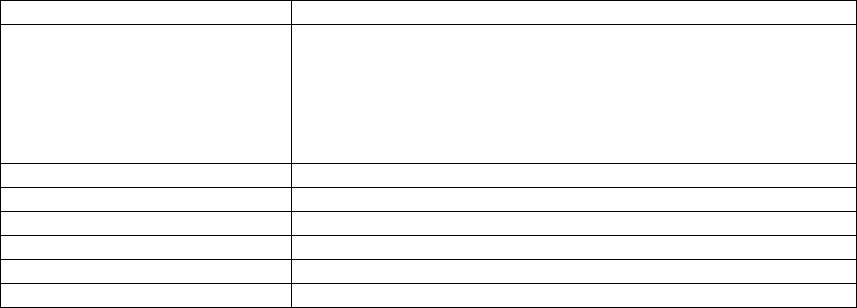
16
Operation System Support Windows® 98SE, ME, 2K, XP
Security 64-bit WEP, 128-bit WEP
WPA, WPA2
PEAP
TLS
LEAP
MD5
Operation Mode Infrastructure & Ad-hoc mode
Transfer Data Rate 802.11b/g: 11, 5.5, 2, 1 Mbps, up to 54 Mbps
Operation Temperature -25°C ~ 70°C
Storage Temperature -30°C ~ 80°C
WHQL Windows® XP and 2000 compliant
Media Access Protocol CSMA/CA with ACK architecture 32-bit MAC